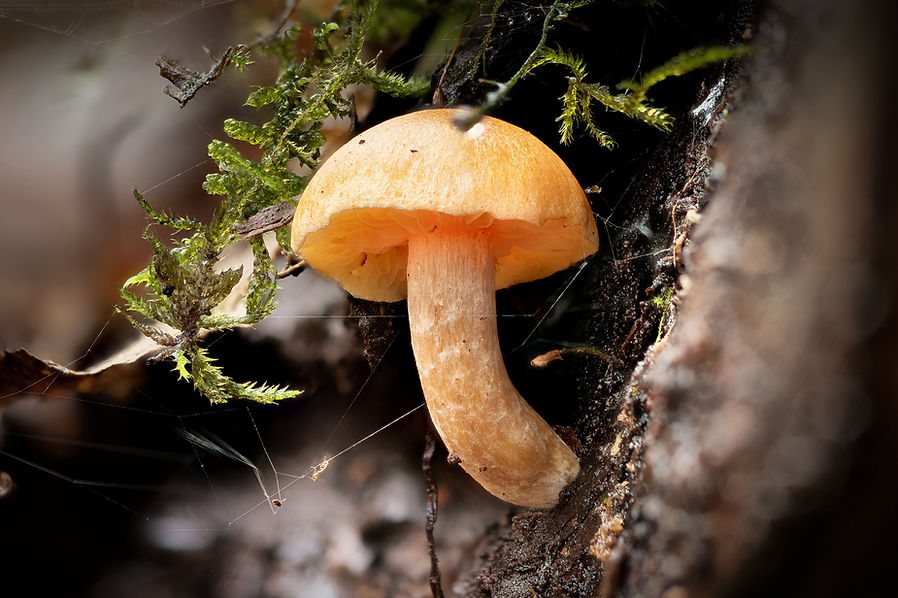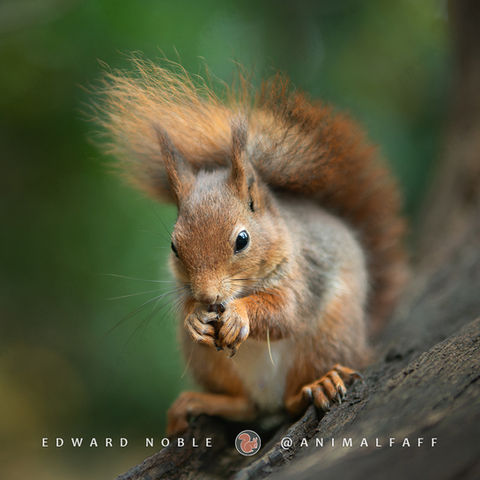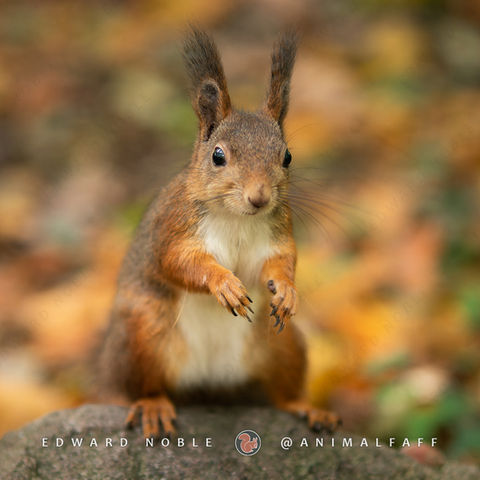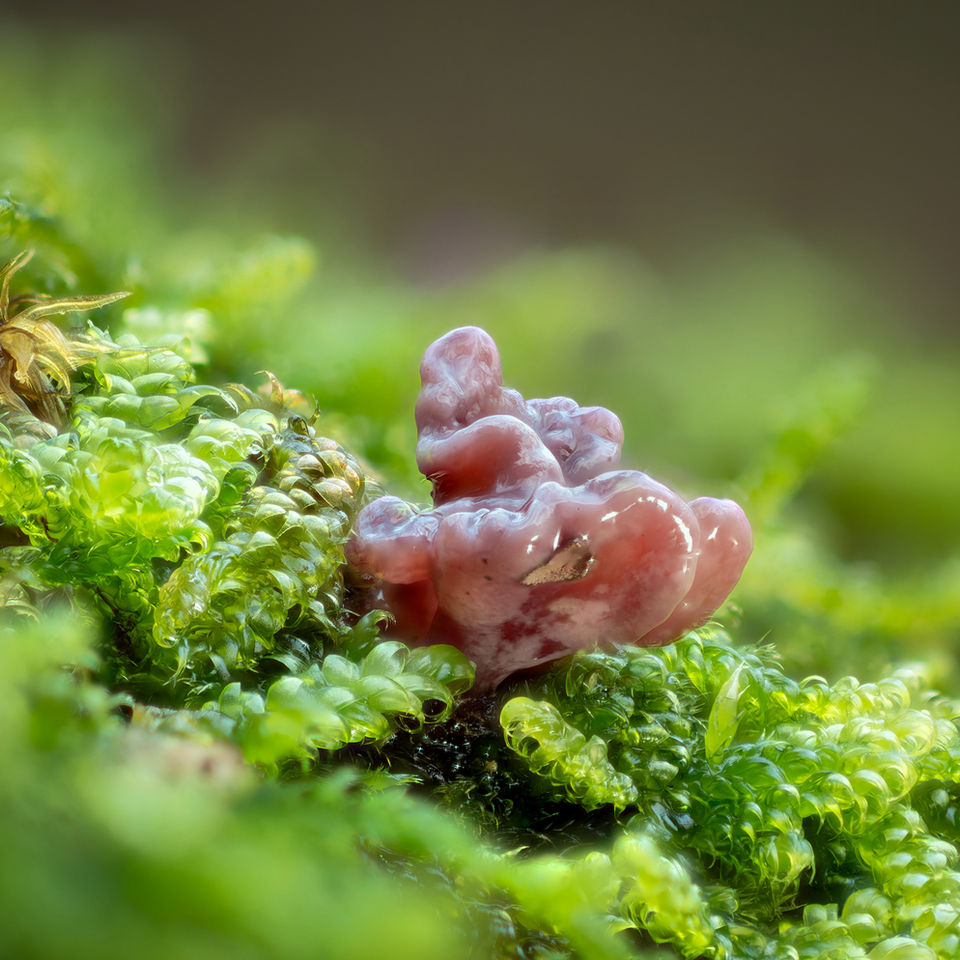NX500 - Retro Review
Samsung's (NX) camera division began winding down in late 2015 and officially ended in early 2017. The NX500 would become their last mode (released in Feb 2015). I wanted to try one as part of my growing obsession with discontinued and retro digital cameras, but I didn't think I would be lucky enough to find an NX500 for a reasonable price. I thought this camera would be fun, but I didn't expect it to be so... well... good. At a glance it looks a lot like the previous (NX300) model, but it's a bit of a wolf in sheep's clothing. Borrowing the sensor and processor from the professional NX1 and adding another control dial, it's impressive on paper and that's before I discovered a firmware mod that adds even more features...
Samsung NX500 + NX 85mm
Key Specifiations
Date:
$ (Inflation):
Sensor:
Resolution:
Burst:
DR Stops:
P-Shutter:
E-Shutter:
SS:
AF points:
IS:
Video:
Live View:
ISO:
EVF:
LCD:
Memory:
Weight:
Battery:
2015 (Feb)
$800 ($1,080)
APS-C BSI CMOS
28mp
9fps for 6 raw
10.6 (14bit)
1/200th
1/30th
30s - 1/6,000th
209 (80%)
No
4k/30
Yes (only)
100 - 25,600
No, just NO!
3" / 1m / Flip only
SD
334g
~370 (BP1130)
Design & Build
The NX500 has a nice minimalist design. An understated metal top plate, large tilt screen and a very comfortable faux leather grip. The 3", 1 million pixel resolution super AMOLED display is quite lovely and flips up 180 degrees for selfies (plus 45 degrees down). Even when I almost exclusively use the rear screen (on my other cameras) and this one is really nice, I do wish there was at least an optional EVF. There is no weather sealing either, but those were the worst issues I could find. The buttons feel good (especially the power switch) and it's lovely to finally see two dedicated control dials for manual shooting, even if they are a little bit fiddly.
Image Quality
The image quality on offer here is pretty much best in class for 2015, slightly edging out the Sony A6000. It uses the same sensor and processor as the professional NX1, which means great image quality and pretty good auto focus. Being higher resolution than my full frame professional Sony A9 (which I still use) and having better dynamic range than early full frame Nikon DSLRs (that I still love), this is still a highly capable sensor today. There is even a lossless RAW option in the menu, eat that 2015 Sony! It's no secret that image quality has rather stagnated over the last ten to fifteen years (at least in these larger sensor cameras) and that dynamic is in full force here.

NX500 + 60mm f2.8 | 30mm f2 | 85mm f1.4
Lenses
Given it's relatively short run Samsung only made fifteen lenses for the NX mount, but there are some really interesting ones. I love small and light cameras, so it's nice that this system is supported by three pancake primes (16mm, 20mm & 30mm). I went for the 30mm f/2 (see above) first. There is also a relatively small 45mm f/1.8, which looks very interesting. I'm not sure I will get any zooms (other than the pancake power zoom that the NX500 came with), but I hear good things about their 16-50mm f/2-2.8 and 50-150mm f/2.8 pro lens's image quality and AF.
Most of the images you will see here are from the NX 85mm f/1.4, which being the bokeh whore that I am I had to buy and it's a really nice lens (if rather heavy). It keeps up with the better SLR 85mm f/1.4 lenses, which is saying a lot, but of course this is APS-C only (1.54x). It doesn't quite stand up to modern mirrorless masterpieces like the Sigma DN, which is lighter despite being full frame. This 130mm f/2.15 full frame equivalent makes it more specialist, but I actually like the slightly longer focal length for wildlife anyway so it's win win for me. If you like bokeh and have a Samsung NX camera I'd highly recommend this one.
The NX 60mm f/2.8 is a decently sharp macro lens, with stabilization. This one is exactly the same focal length of my full frame Sony equivalent (90mm f/2.8 G), but is almost half the weight so you get a nice benefit here with the 1:1 repro ratio providing a great pixel resolution on your subject. Here the equivalent values all work in your favour, giving you f/2.8 transmission and f/4.2 depth of field. The electronic focusing is a little fiddly to set precise manual distances, so it's actually quite awkward to use for focus stacking for several reasons, but more on that later.
like Sony, you can adapt to most SLR mounts with dumb (manual focus) adapters on the NX system. There are no AF adapters here as far as I know (perhaps due to a longer flange distance, lower popularity & a lack of open-source mount), but that doesn't bother me too much. Fortunately most of the major SLR mount options are covered. I went for the Nikkor and Konica adapters and have been enjoying using some of my old glass on this camera. Here's a rough list of the most popular mounts that you can use on the NX system:
-
C-Mount
-
Canon EF
-
Canon FD
-
Contax CY
-
Konica AR
-
L39
-
Leica R
-
M42
-
Minolta MD
-
Nikon F
-
Olympus OM
-
Pentax PK
-
Practica PB
-
T2

Stack x100 - NX 60mm @ f/4
Auto Focus
The auto focusing here is supposedly very good with the two pro zoom lenses. My experience with the NX 85mm is that it seems quicker than some DSLRs, but maybe not the best ones. It doesn't hunt too much. It's a little difficult for me to judge being jaded by the Sony A1. Shooting squirrels was not massively frustrating, so that's probably a sign that things are pretty good. There is focus tracking here, but only "touch tracking". Pressing on the screen in hopes it will track a squirrel was not realistic as that doesn't work on the Sony A1 + 135GM either, but it works fine in less demanding situations. I was hoping it would just start tracking from the middle point like the A1, but it seems unable to do that.
Modification
I was already impressed by the NX500's general usability, buttons and image quality, but when I discovered that a mod could provide even more interesting features it took my appreciation to whole new level. If you have an NX500 and would like to try this go here for all the info you need. I first tried the easier to install Kino Seed mod (NX-KS), but had a few reliability issues, so later tried the Vasile one (explained here), which was much more stable.
Electronic Shutter
Rather amazingly, this mod enables a fully silent electronic shutter mode (only with the NX500, not the NX1). As well as being silent and avoiding shutter vibrations, it also drastically lengthens the life of your camera. Avoiding noisy shutter clicks has enabled me to get some shots of very skittish rodents, which is amazing. I'm very curious why Samsung chose to leave this mode deactivated. This is great for Time Lapse photography (which the mod has some extra features for), since it will eat through lots of images per scene. However, there are at least two other techniques that I can think of which require taking a lot of images and one of them is also enabled by the mod, so it's great that you won't wear out your NX500 too quickly while trying them...

Wood Mouse - NX 85mm: 1/160th, f/1.4, iso 1600
Samsung cameras have never had a fully electronic shutter mode, but some have an option in the menu called "electronic shutter", so what's going on here? This is actually an EFCS mode (Electronic First Curtain Sync), which involves starting the image capture with the electronic shutter (skipping the shutter closing and then opening again), but finishing it with the physical shutter. This improves shutter lag and means the shutter only clicks twice rather than four times (more like a DSLR's sounds, not how it works). Apart from not being silent it can unfortunately also effect the look of bokeh at certain shutter speeds (usually from double your flash sync and higher), so you need to be a bit careful with it. The electronic shutter fixes any issues like this (which is brilliant), however..
Silent shooting with the electronic shutter is not without issues (until the Sony's A9III comes out). Firstly, a rolling shutter speed of 1/30th (33ms) is not very fast. It's twice as fast the Sony A7III (2018), but you should still be aware of its limitations and when not to use it. There is a marginal reduction in dynamic range, although this is pretty subtle. Also keep in mind that it will not work in burst shooting, or at shutter speeds slower than 1/3rd of a second (oddly the mod website states under 1/30th). My experience with the Kino Seed mod is that it takes several seconds to initialize after the camera has started, so if you're too quick off the mark you will still hear the physical shutter fire. This has almost never happened to me since switching to the Vasile mod however.
Bokeh Panoramas
I like to shoot bokeh panoramas (to emulate impossibly fast wide angle lenses). Although it's not something the mod enables, it requires shooting a lot of images, so the electronic shutter helps to take the strain off the physical one.

Stitch x64 - NX 85mm @ f/1.4
Being careful not to induce distortion from the slow rolling shutter during panning with this technique works quite well to not hit the tiny RAW buffer. It still happens occasionally but when it does I can just briefly pause and then continue a little slower as the buffer clears relatively quickly. The Sony NEX 5N was difficult to use in that regard, although to be fair that is quite a bit older. It's nice to shoot as fast as I want in silent mode on my stacked sensor Sony cameras (A9, A1), but the NX500 is just about usable for this.
Although using a crop (APS-C) sensor for this technique will take longer to process while requiring more shots, patience and time to shoot, as long as you are capable of doing that there is no reduction to its ultimate effect. There are a couple of benefits worth mentioning too. Firstly you'll be using the best part of the lenses image quality and secondly, a reduction in mechanical vignetting will avoid darkening and cats-eye bokeh shapes to allow better stitching and a slightly nicer overall aesthetic. For more information about the technique and equipment you can check out my guide here.
There are a lot of ways to stitch these images. Editors like Photoshop and Affinity Photo will do it, but they're not great compared to dedicated software. I use Microsoft ICE (PC only), but unfortunately it stopped being developed in 2015. It still has the best workflow, projection options/settings and fastest processing times of any software I have tried, while also being super easy to use and totally free. If you're on a Mac I think something like PTGui is one of the better options, but it's not as easy to use and it's not free.
Focus Bracketing
The next most interesting mod feature (for me) was "Focus Bracketing", something that still doesn't exist on Sony's flagship camera today. Like Bokeh Panos this also requires shooting many images per shot, so it also benefits greatly from the fully electronic shutter! I just had to get the dedicated macro lens (NX 60mm, see below) to make this feature shine. Luckily someone was selling one on a local auction for a decent price just after I had bought the camera, so it's now mine and I used it to create these...

Stack x100 - NX 60mm @ f/4
Once you activate the Bracketing feature you're presented with a small menu that helps you set your "Near" and "Far" focus distances, how many shots you need and how much delay you want between each one. Once you start the process it gives you a couple seconds to move out of the way while it prepares the initial focus point. I used a small diffused LED light source to help illuminate the scene. I see others using much larger light diffusers, so I have lots to learn and play with to improve these results further.
I had a lot of issues with the Kino Seed mod here. The Vasile mod has been much better, but both can be flaky. Sometimes they will stop mid-sequence and you will have to yank the battery out to reset everything and start again. Although the app will allow you to input any number of images for the bracket, I haven't had any luck with it going over 100. If I put in 200 it will only do the first 100 over half the distance. I am not sure if there is something I am missing here. Maybe it's better as just doing a few for a landscape photo and was not made to stand up to demanding macro work.
The hardest part of this technique is getting the focus distances set. When you manually focus to set the distances the camera zooms in to the middle of the frame. This "punch-in" position cannot be moved around or disabled, which is infuriating. This might be fine for one end of the range, but almost never for both (at least on a macro). This makes it extremely difficult to set the correct distances. You can do this before locking the camera down on the tripod, but moving the whole camera to focus on small subjects will not be accurate. This may be the worst aspect of the NX500, but to play devil's advocate here - since the camera never shipped with the focus bracketing feature it's not something Samsung could have anticipated.
I have tried using Photoshop and Affinity Photo to stack (process) the images together, but image editors are not ideal for this kind of specialist work. Once I tried out Zerene Stacker things got a whole lot better. I processed all the images here using their one month trial and have been so impressed with it that I am surely going to get it.
Speed
Start up time is surprisingly good. The camera systems can occasionally pause (perhaps due to being Linux based). Although the NX500 has a very impressive 9 fps burst speed, it was crippled by only being able to sustain that for 6 frames (5 frames of RAW+JPG). Not even making it to a whole second of burst rather feels like false advertising to me, but this was common for the price point in 2015. Although the buffer runs out quickly it also clears relatively quickly, making it feel quite reasonable unless trying to shoot any kind burst.
Video
Despite being able to do actual 4k resolution (as well as UHD) with h.265 codecs, which is impressive for the time, video is not really the nx500's strongest feature. Firstly the 4k is very cropped and not the greatest quality. The lack of in body image stabilization is rather painful and there is no headphone or mic connections. The firmware hack does help here by removing the record limit, adding a full sensor 2.5k option and opening up the video file bit-rates massively.

<Hooded Crow - NX 85mm: 1/250th, f/1.4, iso 200
Competition
If we compare the NX500 to other APS-C mirrorless cameras of the time (2015) there are a few interesting options to choose from.
The Canon EOS M10 is also now a discontinued system (as of October 2023). Like the Samsung, this also doesn't have a viewfinder or an option to add one. It has a lower spec in general, with a 18mp sensor. The biggest issue picking up one of these today is not the resolution (it never is IMO), but its dynamic range and iso performance. It also does not support any Magic Lantern modification, so even though it's a bit cheaper than the NX500 I don't think the second hand value comes close.
The Fuji X-A2 is another camera with no built-in or optional EVF, but unlike the Canon, this mount is alive and well, with a lot of great options. Much more interesting is the Fuji X-T10 which came out the same year! Being an X-T1 lite, it has great retro dials, nice controls, a built-in EVF and is the only camera here to officially have an electronic shutter mode (going up to 1/32000th speeds). The EVF might be a bit small (0.62x), but it's otherwise good. The sensor is a little old and low resolution (16mp), but it performs very well.
The Sony A6000 has a similar resolution and general sensor performance to the Samsung. More interestingly it manages to squeeze an EVF into a body that's similarly small and light. Having the same lens mount as Sony's full frame system it will be supported forever. It not only has a ton of 1st and 3rd party options, but if you want to adapt to anything else it has the most complete collection of manual and auto focus adapters available, in the world. The only down sides to the Sony: A lower resolution EVF than the previous model (NEX 6), no electronic shutter option or Focus Stacking feature and it is probably the highest second hand price today.
If you don't mind buying into a discontinued system, or living without an EVF then the Samsung can be a great option.
Infrared
I tested the NX500 with a 720nm filter on the 30mm lens. Even with a 30 seconds exposure, at f/2 and iso 12800 there was almost no light coming through and certainly no IR effect. Like Sony cameras, it's hot mirror seems to block all infrared light. Unfortunately it would need to be converted to shoot infrared photography.
Second Hand Value
I picked up this brown NX500 for €150 including the 16-50mm power zoom, but soon added more Samsung lenses. The camera and four NX lenses (16-50mm, 30mm, 60mm & 85mm) ended up setting me back just over €900 in total (less than some smart phones). I probably don't need to tell you that this set will put any phone camera to shame. This kind of bargain can probably only come from discontinued lenses. Understandably, this will put some people off, but if you're willing to take that risk it can provide some extremely impressive results.
Pros
-
Compact
-
Comfortable
-
Great screen
-
Great Image Quality
-
Lossless RAW
-
Good AF & Modes
-
Fast Burst *
-
Decent Battery Life
-
Adapting Lenses
-
Great Value (SH)
-
Wireless Options
-
Silent Shutter (Mod)
-
Focus Stacking (Mod)
-
Video Options (Mod)
Cons
-
No EVF Option
-
Discontinued System
-
Limited Native Lenses
-
No Weather Sealing
-
No Image stabilization
-
No Mic / HP ports
-
* Minuscule Buffer
-
Occasional Lag
Conclusion
The NX500 is still a wonderful little camera in 2023! It seems like the price I got it for was very lucky, so you may not be able to find it quite so cheap, but considering what it can do it's definitely worth it. The firmware mod adds substantial value to the camera by bringing some very powerful features.
I'm ashamed to say that I didn't give Samsung much attention while they were still making cameras. They didn't have the cachet that many other brands had, but looking at the NX500 it's clear that they were capable of being one of the greats if they had just kept going a little longer. This image sensor is still very impressive today. The camera is neat, small and easy to use. There are some very impressive lenses considering Samsung only made fifteen in total! I will always be wondering what could have been if Samsung had kept this line going.
More 'Bokeh Pano' Samples
Here are some more bokeh panorama samples. These were all taken with 85mm f/1.4 lenses, either the Samsung or Nikkor AI-S.
Squirrel Samples
Here is a collection of cute cuddly critters from my first two weeks with the camera and lens. Squirrels are a great stress test due to the adorable fluffy tailed tree rat's penchant for dark places and lightning speeds. I used the NX 85mm f/1.4 ED SSA lens exclusively since it closely resembles my favoured full frame focal length (135mmm) for this. It has a touch more speed, but lacks any image stabilization. The buffer is not all that great, but the biggest issue was the AF performance. AF-C is no use as I need to focus & recompose. Tracking doesn't work by starting focus from the middle point, only to touch the rear screen, which is useless for this kind of photography. Squirrels are just way too fast, so this is why you will see them mostly sat, eating. That said, I have been quite impressed by this camera and lens for this kind of photography...
Macro Samples
Here are some focus stacked examples (using the Vasile mod) from the NX 60mm Macro lens. I decided on some mushrooms since it's Autumn at the moment, but the season is ending, so a lot of thes were not in great shape. I already can't wat to try this next year!




















